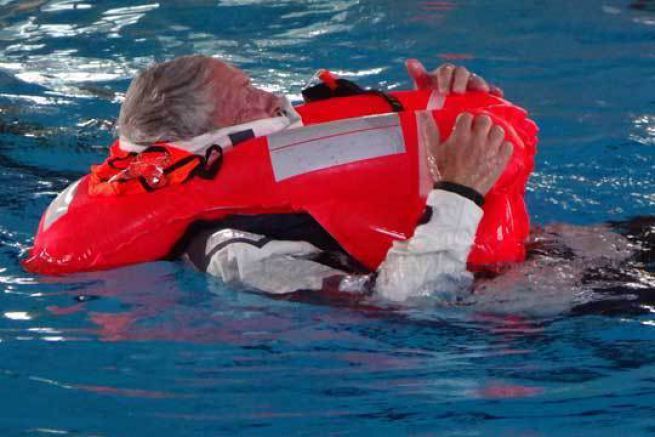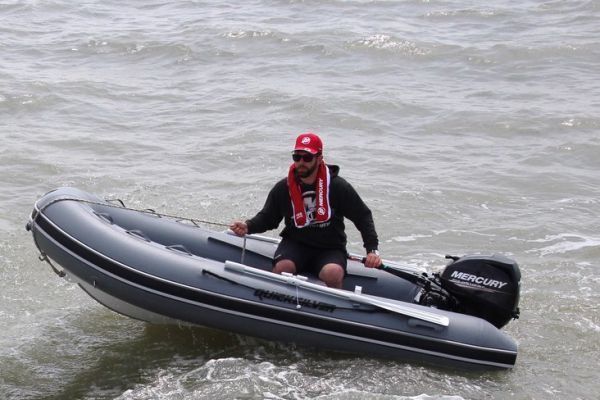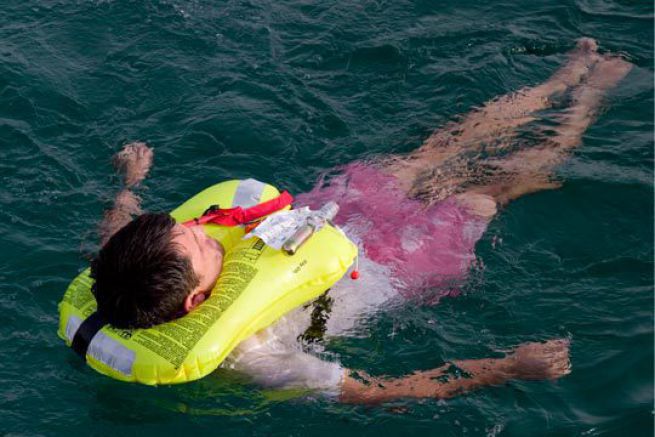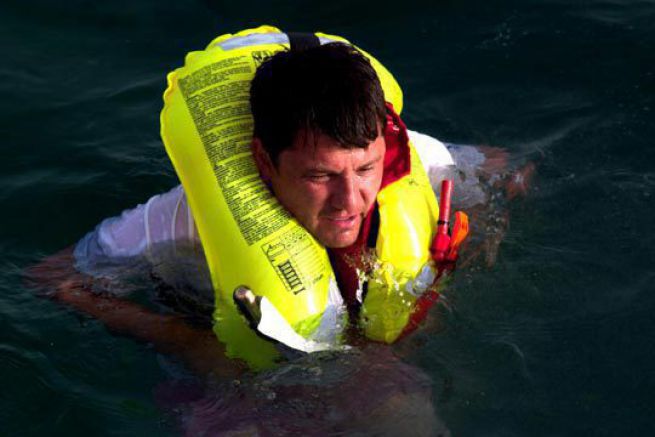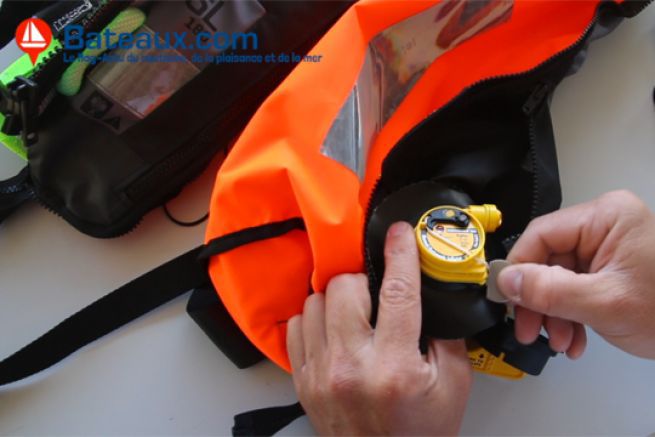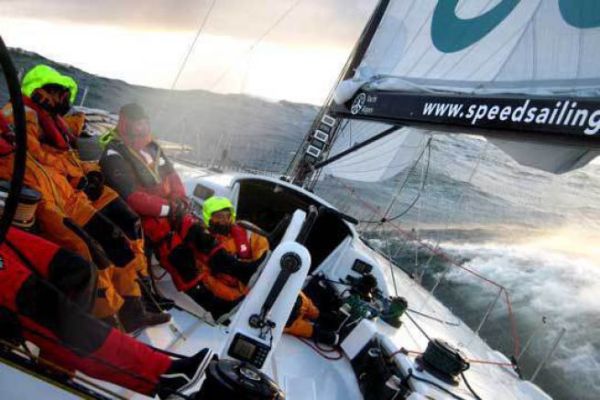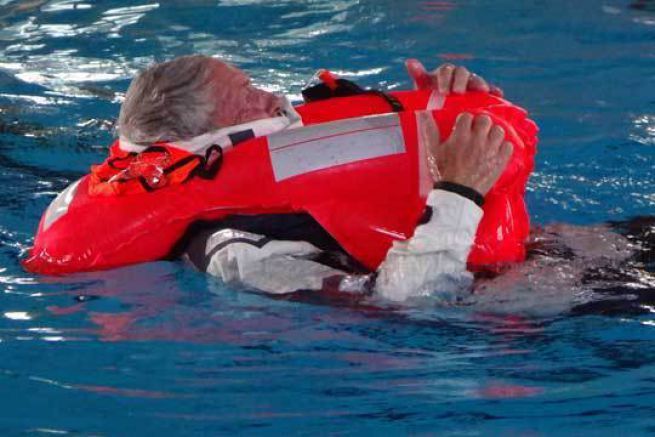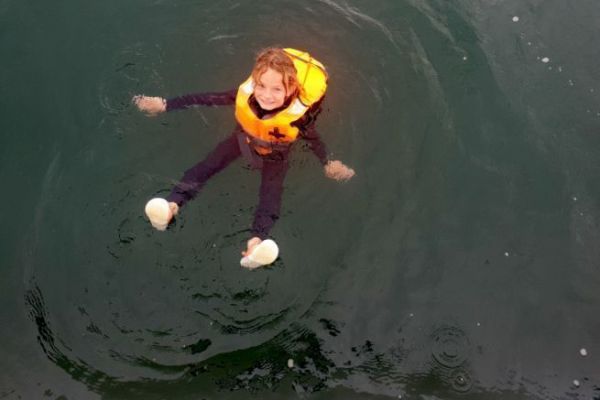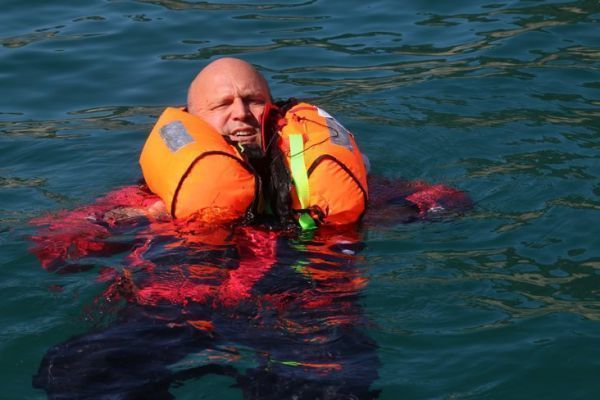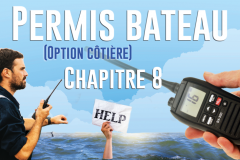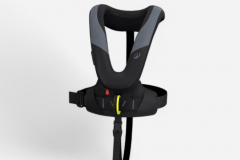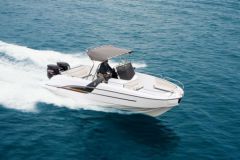What does the "N" on my vest stand for?
The standard in force on life jackets defines 4 categories of jackets characterised by the unit Newton: 50 N, 100 N, 150 N and 275 N. The Newton is a unit of measurement that defines buoyancy. In yachting, the standard recommends 150 N (Newton) lifejackets, for example. This represents about 15 kg of buoyancy or also about 15 litres.

This begs the question: "How can a 150 N lifejacket float an adult weighing 75 kg?".

Why does an object (or a man) float?
Floating has nothing to do with the weight of the object to be floated. A boat floats and yet it weighs heavy, take a supertanker for example. The "land" weight is not the same on the water. The buoyancy depends on the density of the object, the ratio between weight and volume.
An object that has a lower density than water will float. Conversely, it sinks. It's Archimedes' famous principle, which states: "Every body immersed in a fluid is subjected to a vertical force, directed upward and opposite to the weight of the volume of fluid displaced."
The purpose of the lifejacket is not to support the full weight of the castaway above the water, but only to provide vertical thrust to keep the airway out of the water. An adult's head weighs between 6 and 8 kg on average, so a 150 N lifejacket is sufficient to keep it out of the water.
The designer W. Hartung, on behalf of the vest manufacturer SECUMAR, demonstrates this with some very explicit drawings :
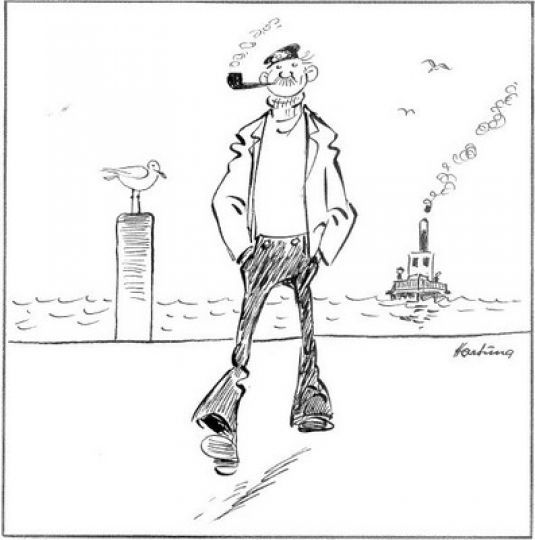
Here is an example of an adult sailor.
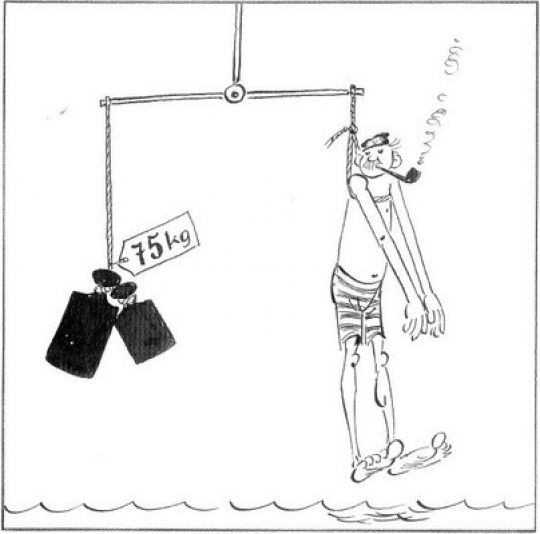
Undressed, he weighs 75 kg
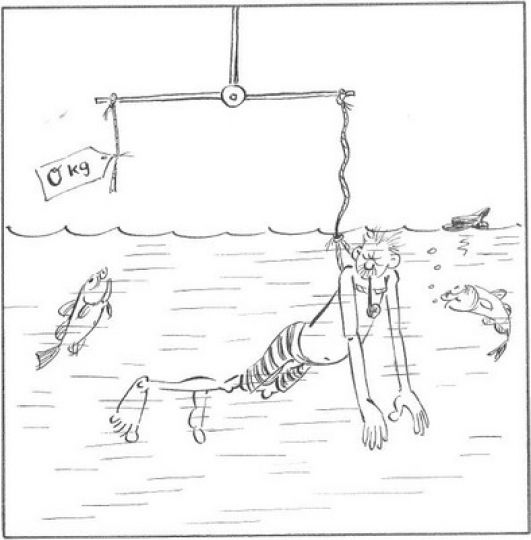
By dropping it in the water, it does not sink, but floats between two waters.
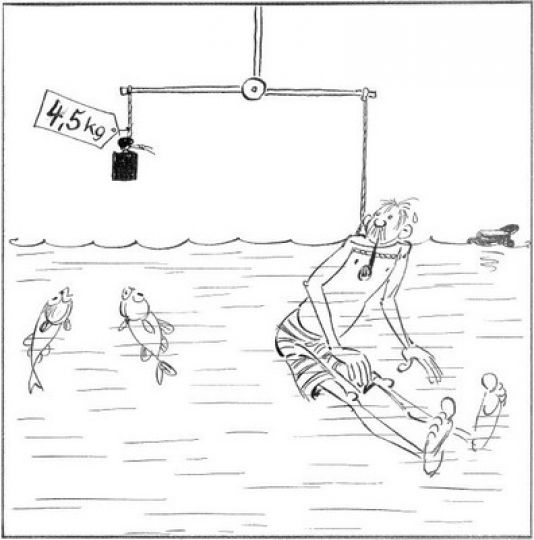
To get his head out of the water to allow him to breathe, we have to relieve him of only a few pounds.
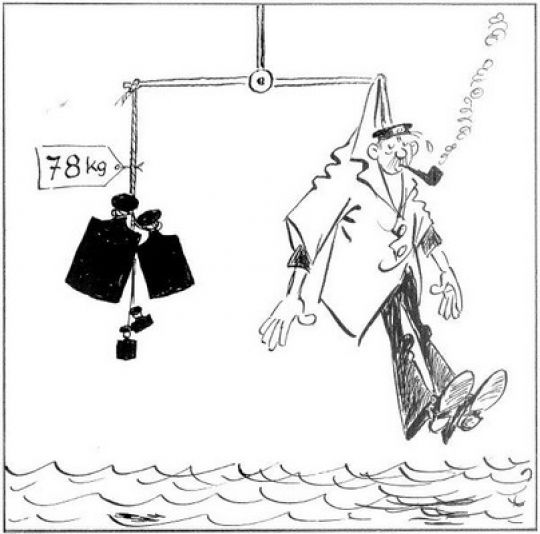
Now if we take the same dressed-up sailor, he weighs 78 kg.
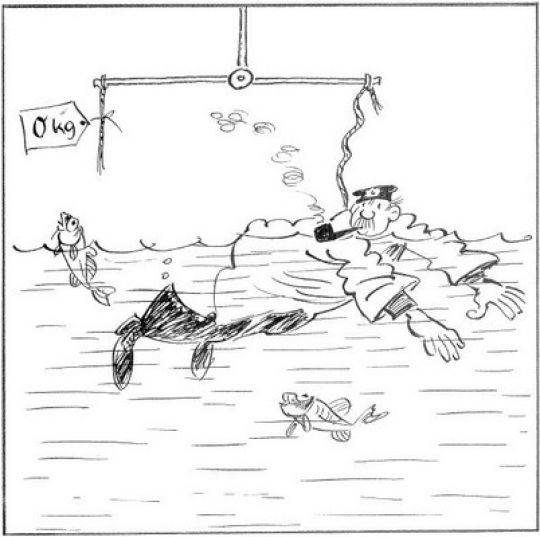
Once in the water, the air in his clothes helps him to float.
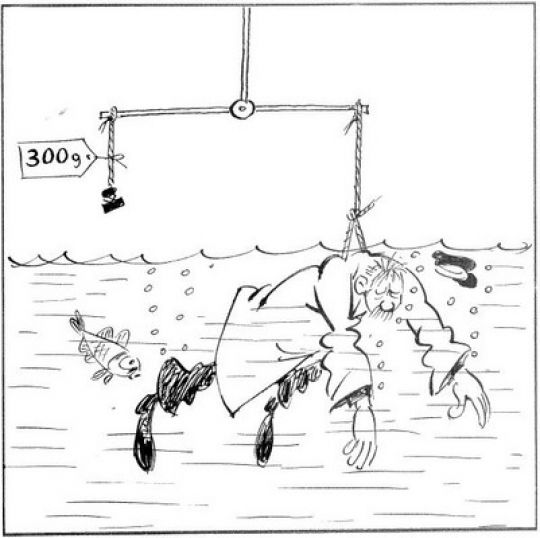
But after a while, the clothes get wet and the air pockets disappear. Our sailor begins to sink.
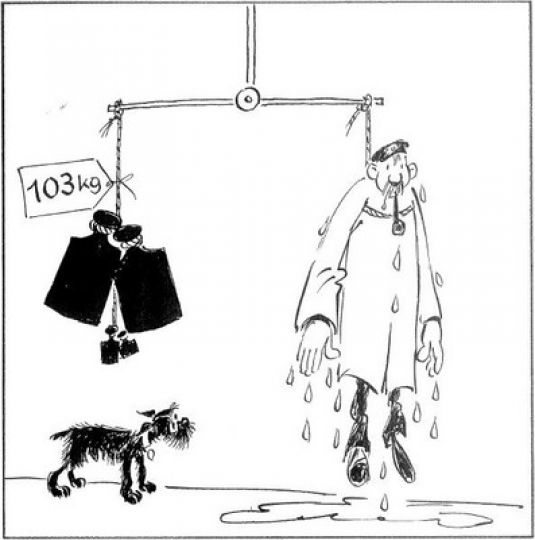
If you fished him out, he weighs a lot more. His clothes are wet.
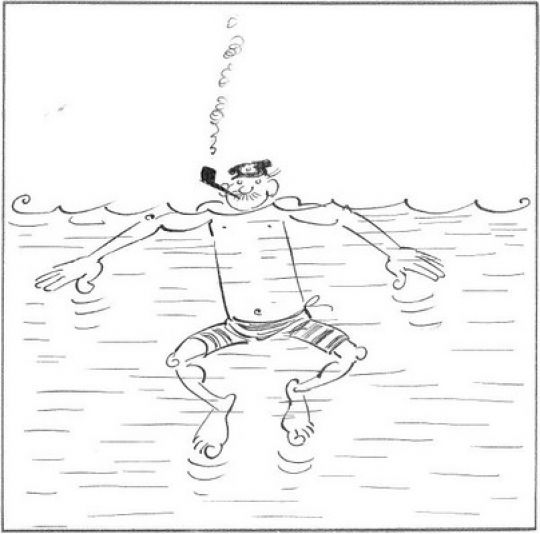
There's our sailor swimming again. His movements keep him at the surface.
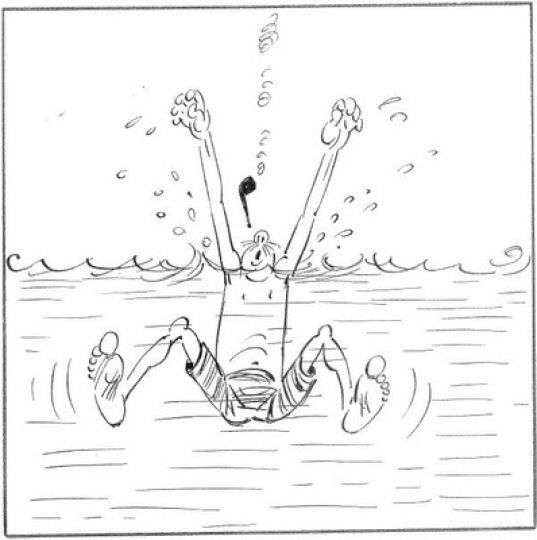
But tired, he might drown.
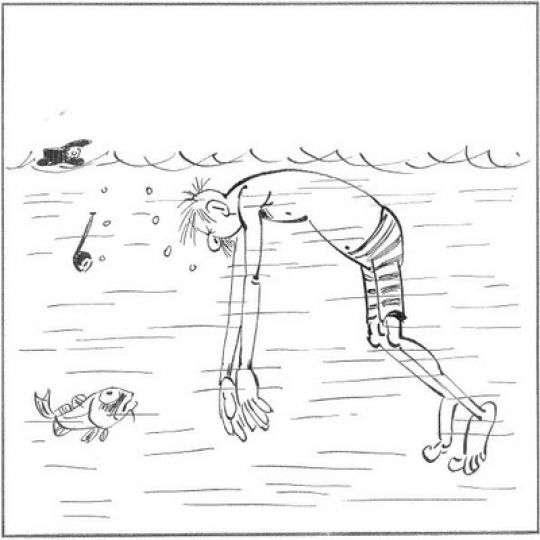
If he stops swimming, the weight of his head causes his body to tip forward.
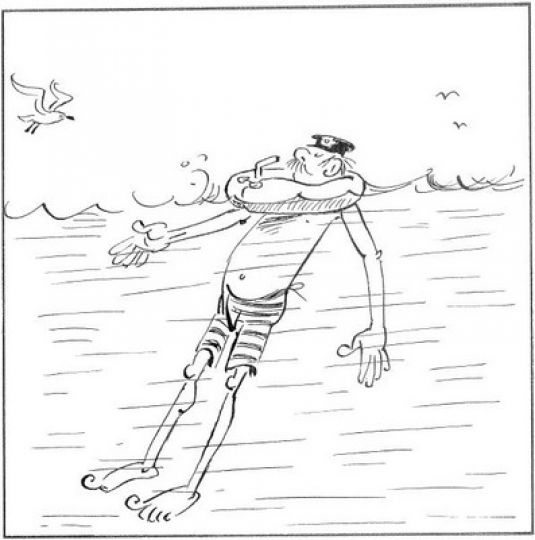
A simple inflatable envelope placed around the head is enough to keep his head out of the water.
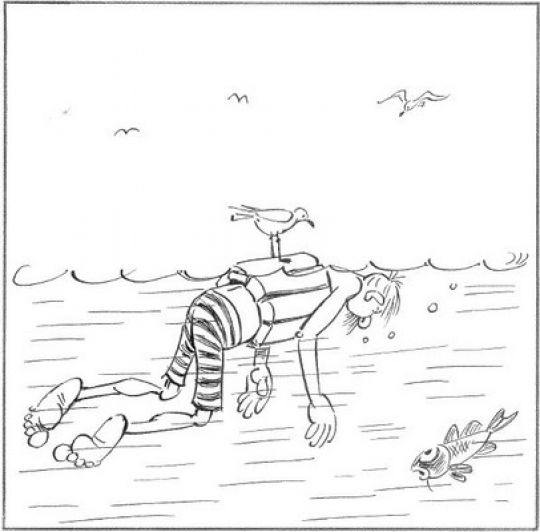
That's not the case with a vest worn around the body.
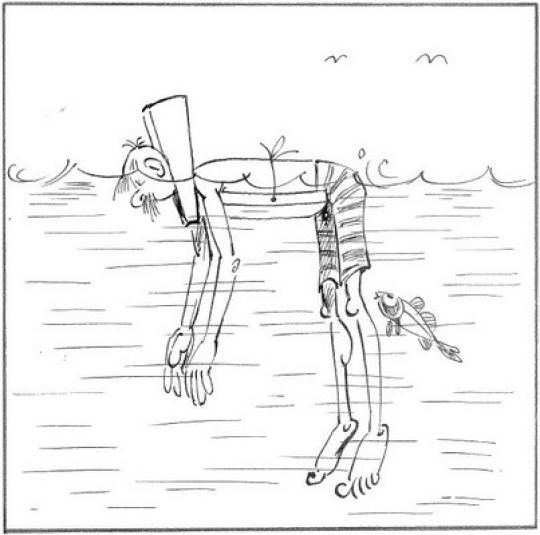
Similarly, if the flotation is on the back of the vest..
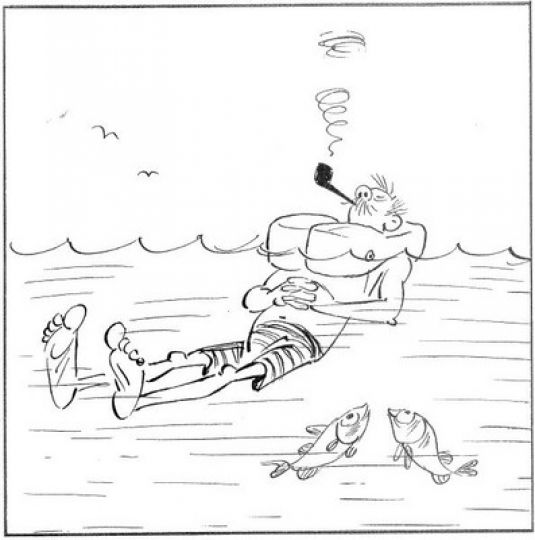
With a buoyancy in front of the chest and around the head, our sailor floats with the airways out of the water
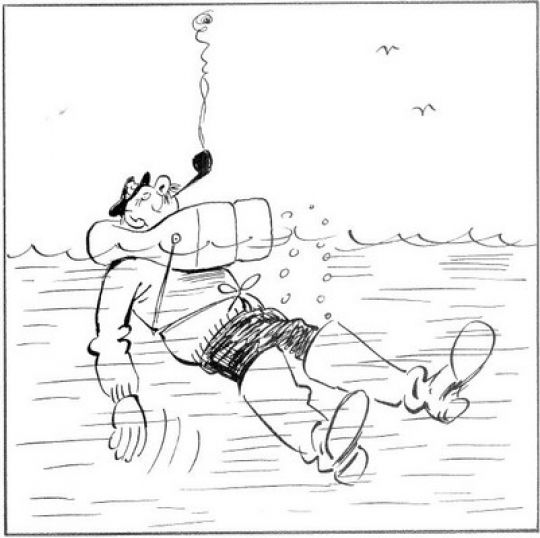
This is the role of the lifejacket, which remains effective even if the castaway is dressed.

 /
/ 